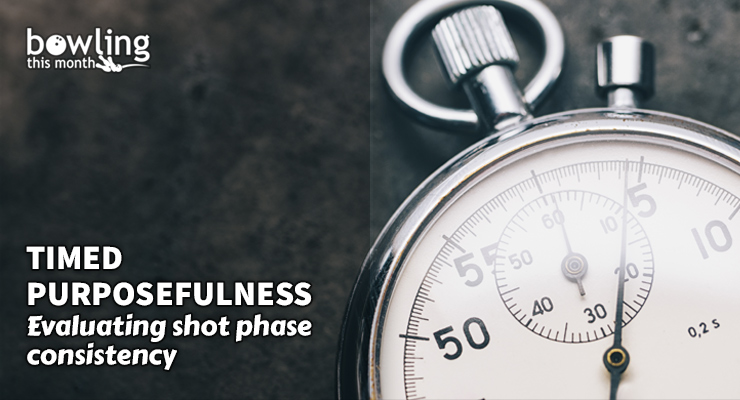Article Contents
- 1. An example of timed shot phases from professional golf
- 2. How important can one shot be?
- 3. Defining and measuring shot phases
- 3.1. Phase 1: the approach setup
- 3.2. Phase 2: targeting, line creation
- 3.3. Phase 3: the approach
- 3.4. Phase 4: shot time
- 4. Collecting and analyzing shot phase times
- 4.1. Data analysis sheet
- 4.2. Analysis
- 5. Differentiating between pre-approach and pre-shot routines
- 6. Conclusion
Note: This article is only available to Bowling This Month subscribers.
With the college season on break for Lincoln Memorial University, I have taken advantage of the downtime to develop a deeper evaluation protocol to determine the level of consistency a bowler has in both practice and competition. For me, this involves breaking the shot sequence into micro-phases in order to measure each component more closely.
Imagine the value of measuring the actual time and determining how consistent each specific phases of a shot is, from the actual time a bowler utilizes to set up for each shot, to the time used to complete the targeting process before moving. These two shot phases collectively will determine a purposeful measure (i.e. purposeful setup process and purposeful targeting). In addition, if we determine the actual time to complete the approach and throw each shot, we will have a measure of how consistent a bowler’s physical game is throughout the physical elements of an approach. Collectively, these are the micro-phases of a shot. Shot time provides a measure of quality and consistency as well.
The more data we have for each bowler, the more opportunity we have to reveal correlations to shotmaking quality as well as consistency measures to determine performance profiles. Considering the performance impact of one or two shots in a tournament—more on this later—revealing the truth of each bowler affords an opportunity to radically assess and improve in all the areas we actually control as a bowler.
In this article, I define measurable shot phases, each of which can be timed, as well as discuss how we can analyze them to determine correlations between time used in each phase to good and bad shots. Finally, I offer guidance ...
Already a premium member? Click here to log in.


 (Only
(Only 